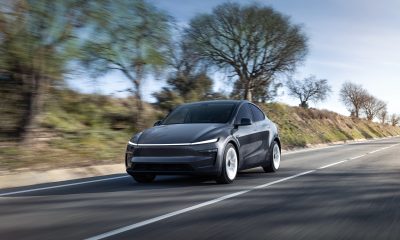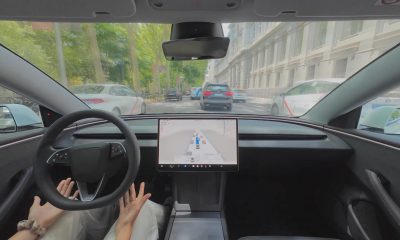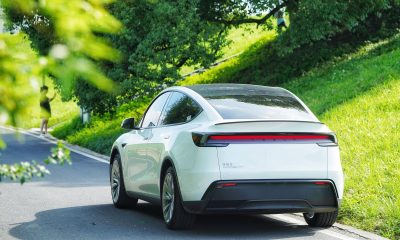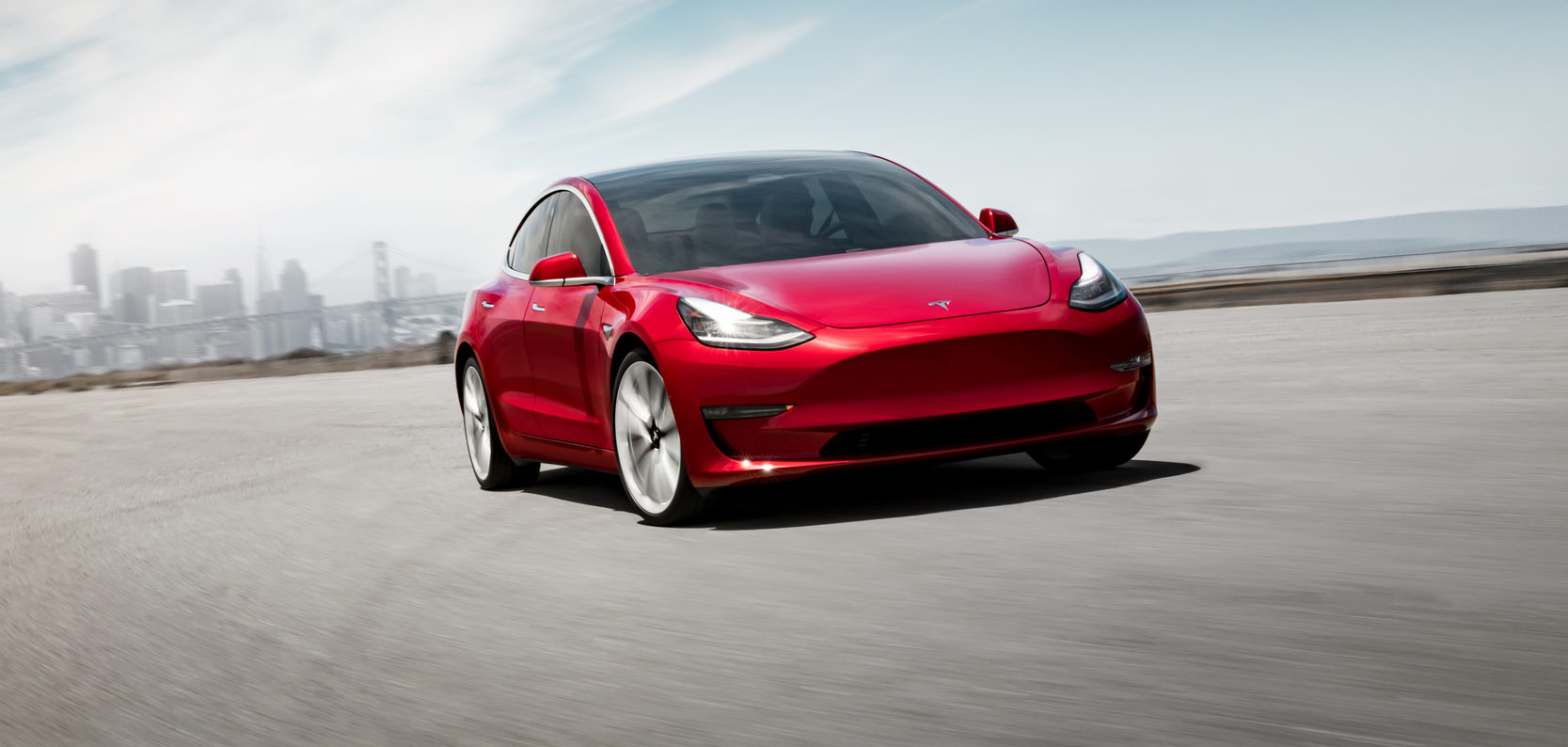

Lifestyle
Tesla redefines ‘luxury’ segment as industry shifts focus to technology
Tesla’s official website dubs the Model S, X, and 3 as “premium” electric cars. Nevertheless, Tesla’s electric cars such as the Model S have proven to be formidable entries in the luxury segment, particularly against mainstays from legacy automakers such as the Mercedes-Benz S-Class and the BMW 7 Series, which are characterized by plush amenities and expensive interior accents. How then, are Tesla’s premium vehicles, which adopt a minimalistic theme and an almost spartan interior, performing so well in a market where more is usually better? By invoking a sense of luxury through deep software integration, of course.
To say that Tesla’s electric cars have their own fair share of critics is an understatement. Among the criticisms directed at the company’s vehicles is the fact that they do not have the same luxurious features found on other vehicles in their class. Critics of Tesla would be quick to point out that the company’s vehicles are not fitted with the same premium materials found in their German rivals. Tesla’s cars continue to sell, however, because as those who have found themselves behind the wheel of a Tesla know, the company’s electric cars are just an entirely different breed of vehicle, offering a completely different driving experience.
131 days with my Tesla Model 3 and 7k miles later! I have a large grin on my face every day because of this car. Is it possible to love material things? Here’s to thousands of more miles of all electric driving. Thanks for an awesome car @Tesla and @elonmusk #Tesla #Model3 pic.twitter.com/tUYUc8kwU5
— A61 (@AUE_61) July 25, 2018
It’s not difficult to find social media posts from Tesla owners who state that they would never go back to driving a car powered by an internal combustion engine again. With the release of the Model 3, the number of new Tesla owners are increasing, and so are the numbers of positive reviews for the company’s electric cars. Considering Tesla’s plan for the Model 3, it is no surprise that the vehicle, which features a radically minimalistic interior, is frequently dubbed as the “iPhone of cars.”
https://twitter.com/PaulStorost/status/1022659335086845957
In a way, comparisons between Tesla and Apple are understandable, considering that both companies release products built around custom software. Apple designs its software for its hardware, ensuring that its offerings, such the iPhone, functions and performs optimally. This integration of hardware and software ultimately became the trigger that changed the market’s perception of what smartphones were capable of. Other manufacturers attempted to take on the iPhone through their own devices, including Samsung’s Android-powered S and Note series. To match the smoothness of Apple’s iOS-powered iPhones, Samsung equipped its flagship devices with as much specs, features, and accessories as the smartphones can handle. Samsung eventually pushed too far with its “more is better” strategy once, and the result was the Galaxy Note 7, a smartphone that literally went up in flames. Today, a perfect Android phone exists, and that is the Google Pixel series, a smartphone line built specifically for Android OS.
Once I had an iPhone, was I ever going to buy a non-iPhone device again?Nope. What about yourself? If there's a similar dynamic with Model 3, then one may see why $TSLA is valued beyond current cash flows & $F or $GM have a bleak future customer base (tariff red herring).
— Ryan Stuhr (@StuhrRyan) July 26, 2018
For now, Tesla’s competitors in the luxury segment are adopting a strategy not that different from Samsung. They adopt software and tech, but the level of integration is not that deep. Tech used by legacy carmakers, such as BMW with the top-tier M3’s heads-up display, could be seen as simple add-ons to a legacy platform and very little else. Tesla, on the other hand, builds everything in house, making software that works for the car and a car that works for the software. This becomes evident in improvements rolled out through over-the-air updates and features such as Enhanced Autopilot.
This integration allows Tesla’s electric cars to feel like a unified experience — one that can redefine how some perceive cars as a whole. For drivers of the premium electric cars, driving such a vehicle could be a turning point, similar to when one used a touch-based smartphone for the first time after using devices with physical keyboards for years. With the release of the Model 3, and based on positive reactions from the vehicle’s owners, it appears that the iPhone of cars has definitely arrived in the auto industry. As for the “Google Pixel of cars,” it seems that it might take a while before that vehicle would be made.
Elon Musk
X account with 184 followers inadvertently saves US space program amid Musk-Trump row
Needless to say, the X user has far more than 184 followers today after his level-headed feat.
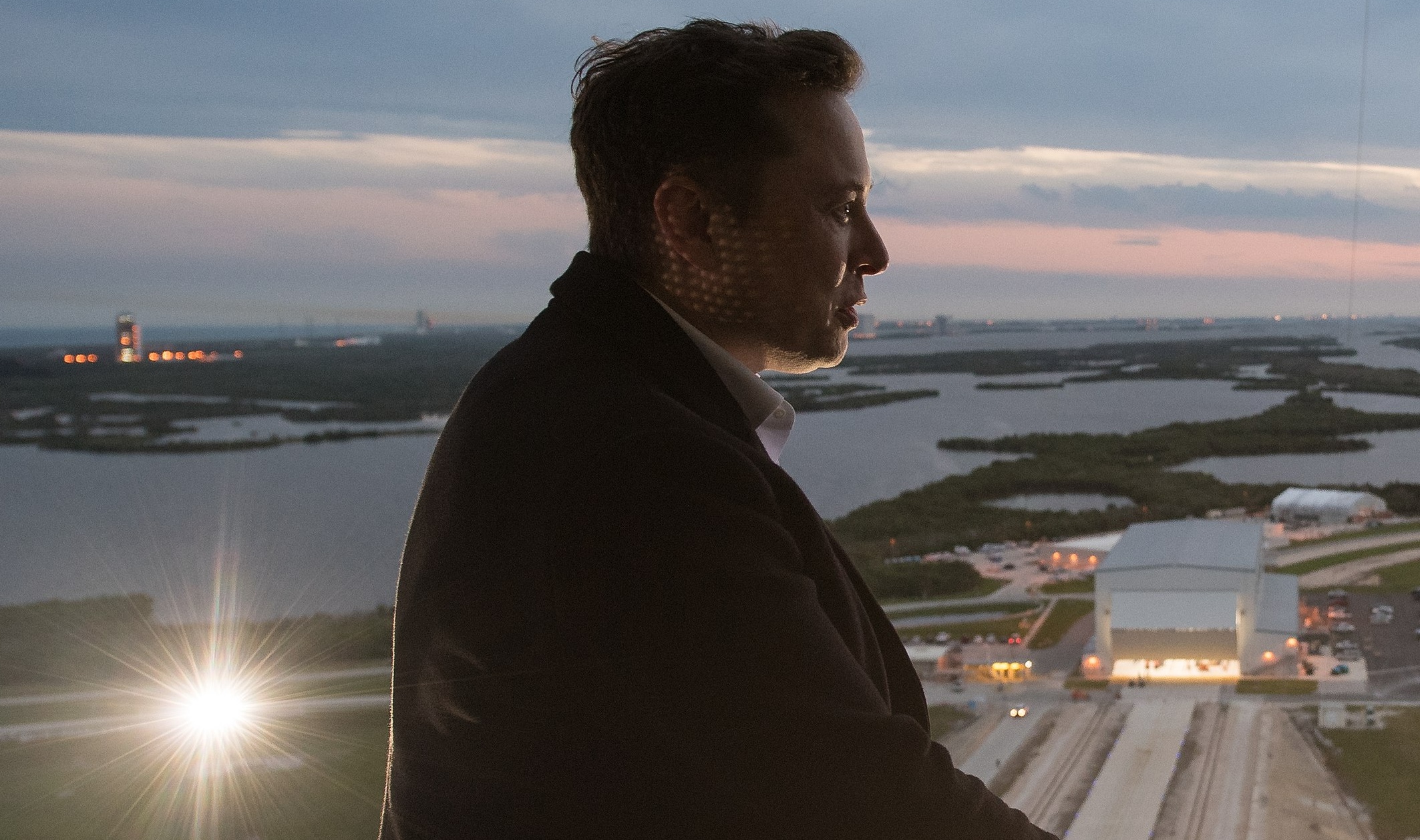
An X user with 184 followers has become the unlikely hero of the United States’ space program by effectively de-escalating a row between SpaceX CEO Elon Musk and President Donald Trump on social media.
Needless to say, the X user has far more than 184 followers today after his level-headed feat.
A Near Fall
During Elon Musk and Donald Trump’s fallout last week, the U.S. President stated in a post on Truth Social that a good way for the United States government to save money would be to terminate subsidies and contracts from the CEO’s companies. Musk responded to Trump’s post by stating that SpaceX will start decommissioning its Dragon spacecraft immediately.
Musk’s comment was received with shock among the space community, partly because the U.S. space program is currently reliant on SpaceX to send supplies and astronauts to the International Space Station (ISS). Without Dragon, the United States will likely have to utilize Russia’s Soyuz for the same services—at a significantly higher price.
X User to the Rescue
It was evident among X users that Musk’s comments about Dragon being decommissioned were posted while emotions were high. It was then no surprise that an X account with 184 followers, @Fab25june, commented on Musk’s post, urging the CEO to rethink his decision. “This is a shame this back and forth. You are both better than this. Cool off and take a step back for a couple days,” the X user wrote in a reply.
Much to the social media platform’s surprise, Musk responded to the user. Even more surprising, the CEO stated that SpaceX would not be decommissioning Dragon after all. “Good advice. Ok, we won’t decommission Dragon,” Musk wrote in a post on X.
Not Planned, But Welcomed
The X user’s comment and Musk’s response were received extremely well by social media users, many of whom noted that @Fab25june’s X comment effectively saved the U.S. space program. In a follow-up comment, the X user, who has over 9,100 followers as of writing, stated that he did not really plan on being a mediator between Musk and Trump.
“Elon Musk replied to me. Somehow, I became the accidental peace broker between two billionaires. I didn’t plan this. I was just being me. Two great minds can do wonders. Sometimes, all it takes is a breather. Grateful for every like, DM, and new follow. Life’s weird. The internet’s weirder. Let’s ride. (Manifesting peace… and maybe a Model Y.)” the X user wrote.
Lifestyle
Tesla Cybertruck takes a bump from epic failing Dodge Charger
The Cybertruck seemed unharmed by the charging Charger.
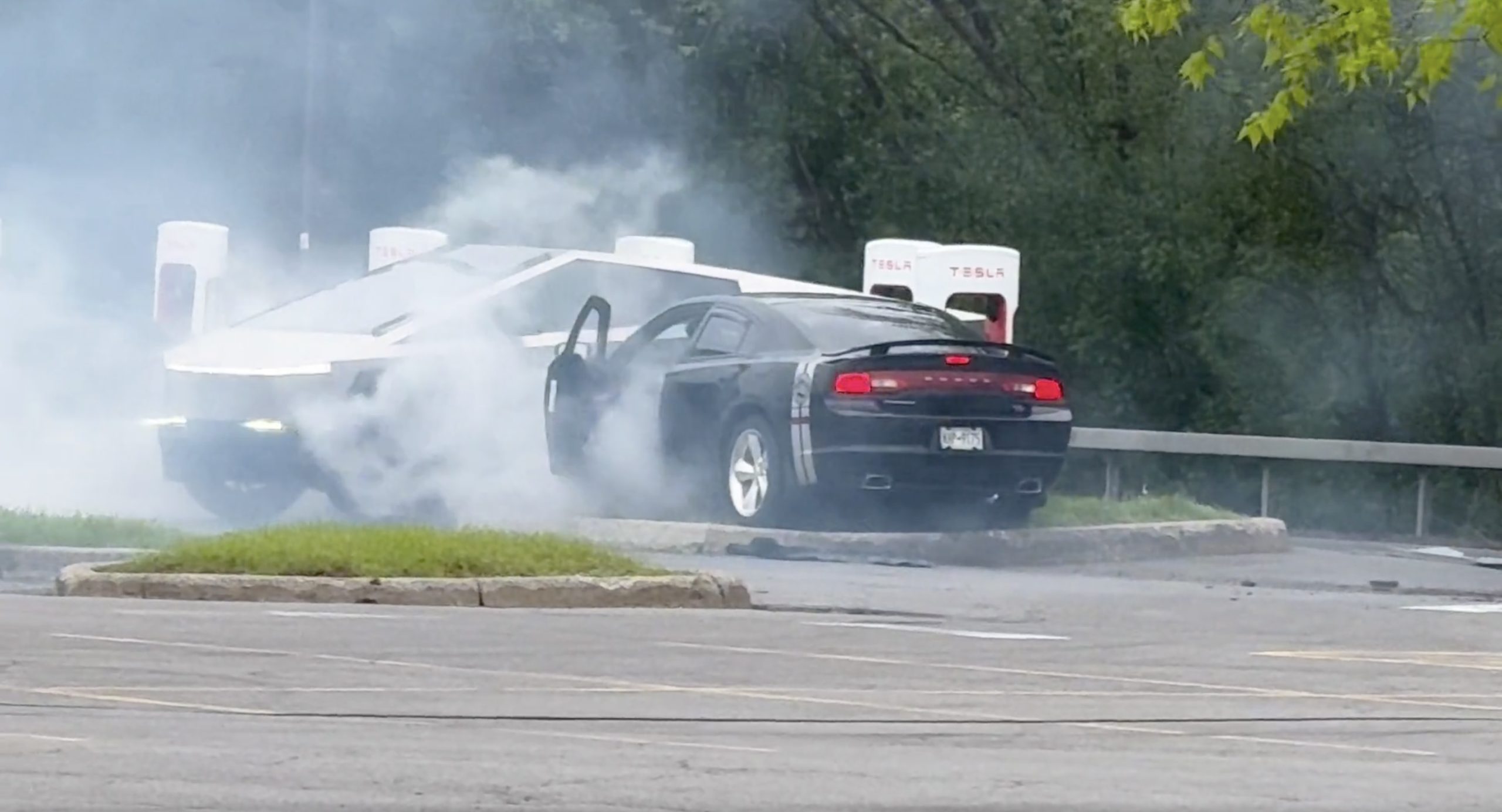
There comes a time in a driver’s life when one is faced with one’s limitations. For the driver of a Dodge Charger, this time came when he lost control and crashed into a Tesla Cybertruck–an absolute epic fail.
A video of the rather unfortunate incident was shared on the r/TeslaLounge subreddit.
Charging Charger Fails
As could be seen in the video, which was posted on the subreddit by Model Y owner u/Hammer_of_something, a group of teens in a Dodge Charger decided to do some burnouts at a Tesla Supercharger. Unfortunately, the driver of the Charger failed in his burnout or donut attempt, resulting in the mopar sedan going over a curb and bumping a charging Cybertruck.
Ironically, the Dodge Charger seemed to have been parked at a Supercharger stall before its driver decided to perform the failed stunt. This suggests that the vehicle was likely ICE-ing a charging stall before it had its epic fail moment. Amusingly enough, the subreddit member noted that the Cybertruck did not seem like it took any damage at all despite its bump. The Charger, however, seemed like it ran into some trouble after crashing into the truck.
Alleged Aftermath
As per the the r/TeslaLounge subreddit member, the Cybertruck owner came rushing out to his vehicle after the Dodge Charger crashed into it. The Model Y owner then sent over the full video of the incident, which clearly showed the Charger attempting a burnout, failing, and bumping into the Cybertruck. The Cybertruck owner likely appreciated the video, in part because it showed the driver of the Dodge Charger absolutely freaking out after the incident.
The Cybertruck is not an impregnable vehicle, but it can take bumps pretty well thanks to its thick stainless steel body. Based on this video, it appears that the Cybertruck can even take bumps from a charging Charger, all while chilling and charging at a Supercharger. As for the teens in the Dodge, they likely had to provide a long explanation to authorities after the incident, since the cops were called to the location.
Lifestyle
Anti-Elon Musk group crushes Tesla Model 3 with Sherman tank–with unexpected results
Ironically enough, the group’s video ended up highlighting something very positive for Tesla.
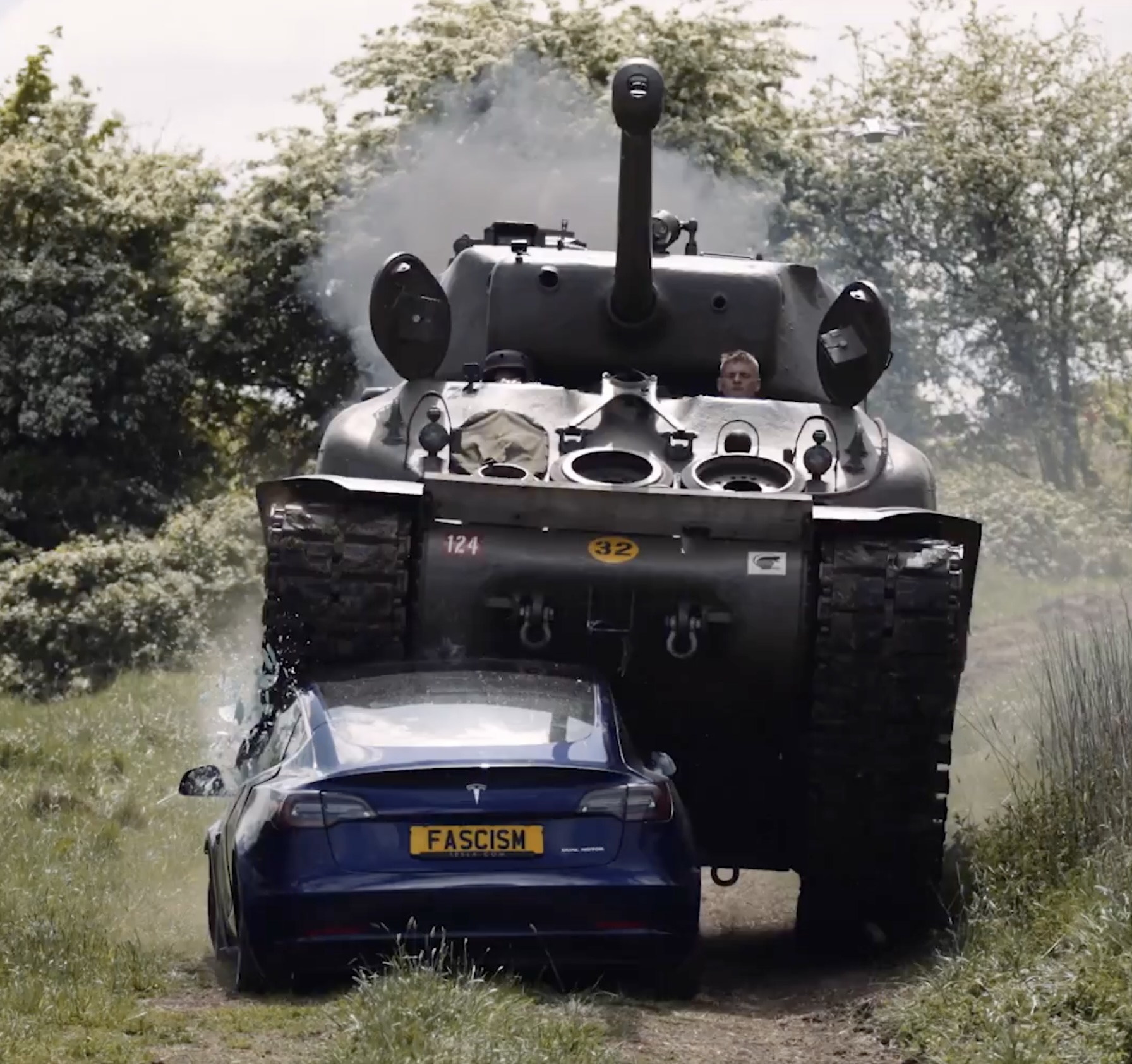
Anti-Elon Musk protesters and critics tend to show their disdain for the CEO in various ways, but a recent video from political action group Led By Donkeys definitely takes the cake when it comes to creativity.
Ironially enough, the group’s video also ended up highlighting something very positive for Tesla.
Tank vs. Tesla
In its video, Led By Donkeys featured Ken Turner, a 98-year-old veteran who served in the British army during World War II. The veteran stated that Elon Musk, the richest man in the world, is “using his immense power to support the far-right in Europe, and his money comes from Tesla cars.”
He also noted that he had a message for the Tesla CEO: “We’ve crushed fascism before and we’ll crush it again.” To emphasize his point, the veteran proceeded to drive a Sherman tank over a blue Tesla Model 3 sedan, which, of course, had a plate that read “Fascism.”
The heavy tank crushed the Model 3’s glass roof and windows, much to the delight of Led By Donkeys’ commenters on its official YouTube channel. But at the end of it all, the aftermath of the anti-Elon Musk demonstration ended up showcasing something positive for the electric vehicle maker.
Tesla Model 3 Tanks the Tank?
As could be seen from the wreckage of the Tesla Model 3 after its Sherman encounter, only the glass roof and windows of the all-electric sedan were crushed. Looking at the wreckage of the Model 3, it seemed like its doors could still be opened, and everything on its lower section looked intact.
Considering that a standard M4 Sherman weighs about 66,800 to 84,000 pounds, the Model 3 actually weathered the tank’s assault really well. Granted, the vehicle’s suspension height before the political action group’s demonstration suggests that the Model 3’s high voltage battery had been removed beforehand. But even if it hadn’t been taken off, it seemed like the vehicle’s battery would have survived the heavy ordeal without much incident.
This was highlighted in comments from users on social media platform X, many of whom noted that a person in the Model 3 could very well have survived the ordeal with the Sherman. And that, ultimately, just speaks to the safety of Tesla’s vehicles. There is a reason why Teslas consistently rank among the safest cars on the road, after all.
-

 Elon Musk4 days ago
Elon Musk4 days agoTesla investors will be shocked by Jim Cramer’s latest assessment
-

 News1 week ago
News1 week agoTesla Robotaxi’s biggest challenge seems to be this one thing
-

 Elon Musk2 weeks ago
Elon Musk2 weeks agoFirst Look at Tesla’s Robotaxi App: features, design, and more
-

 News2 weeks ago
News2 weeks agoSpaceX and Elon Musk share insights on Starship Ship 36’s RUD
-

 News2 weeks ago
News2 weeks agoWatch Tesla’s first driverless public Robotaxi rides in Texas
-

 News1 week ago
News1 week agoWatch the first true Tesla Robotaxi intervention by safety monitor
-

 News2 weeks ago
News2 weeks agoTesla has started rolling out initial round of Robotaxi invites
-

 Elon Musk2 weeks ago
Elon Musk2 weeks agoTesla to launch in India in July with vehicles already arriving: report


